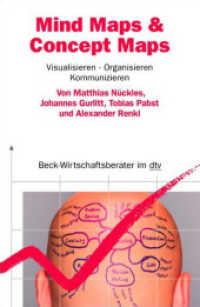Full Description
From 1900 to 1909, Indian school educators gathered at annual meetings of the National Educational Association's Department of Indian Education. The papers they delivered were later published in the Journal of Proceedings and Addresses of the National Educational Association, but strict guidelines often meant they were heavily edited before publication. In this second volume of Department of Indian Education papers, Larry C. Skogen presents selected complete papers from the years 1905 to 1909 and provides historical context.
During this period educators promoted the belief that Natives could never be fully integrated into white society and argued instead for vocational and practical education near or on reservations, a clear break from earlier years, when prominent Indian school administrators advocated education far removed from Native communities. Indian school educators at these annual meetings also shared their methods with other educational thinkers and practitioners, who were seeking alternative pedagogies as new immigrants arrived in U.S. cities and challenges arose from new island territories. These selected writings reveal how the NEA influenced Indian school educators and how those educators, in turn, affected mainstream educational thinking.
Contents
List of Illustrations
Acknowledgments
Introduction
List of Abbreviations
Part 1. Asbury Park and Ocean Grove, New Jersey, July 3-7, 1905
1. Greeting to Indian School Educators
Honorable John J. Fitzgerald, Member of the Committee on Indian Affairs, U. S.
House of Representatives
2. Greeting to Indian School Educators
Mary R. Campbell, Graduate Student in Philosophy, Johns Hopkins University, Baltimore, Maryland
3. Greeting to Indian School Educators
Estelle Reel, Superintendent of Indian Schools, Washington DC
4. Music of the American Indian
Natalie Curtis, New York City
5. Teaching Indian Pupils to Speak English
Reuben Perry, Superintendent, Navajo Indian School, Fort Defiance, Arizona
6. Indian Characteristics
Mary C. Judd, Minneapolis, Minnesota
7. The Advisability of Conducting Normal Schools to Train Teachers for the Specific Purpose of Instructing Indian Children
John D. Benedict, Superintendent of Schools in Indian Territory
8. The Necessity for More and Better-Equipped Day Schools
James J. Duncan, Day School Inspector, Pine Ridge Agency, South Dakota
Part 2. Los Angeles, California, July 8-12, 1907
9. Indians and Their Education
Francis E. Leupp, Commissioner of Indian Affairs, Washington DC
10. Response to Greetings from Local Dignitaries
Francis E. Leupp, Commissioner of Indian Affairs, Washington DC
11. Essential Features in the Education of the Child Race
George P. Phenix, Superintendent of the Academic and Normal Departments, Hampton Normal and Agricultural Institute, Hampton, Virginia
12. Native Indian Art
Angel De Cora, Instructor in Native Indian Art, Carlisle Indian Industrial School, Carlisle, Pennsylvania
13. Roundtable Conference
Chairman-Francis E. Leupp, Commissioner of Indian Affairs, Washington DC (Question and Answer Portion)
14. Address
Elmer Ellsworth Brown, U. S. Commissioner of Education, Washington DC
15. Manual Training in the Indian Schools
Moses Friedman, Assistant Superintendent, Haskell Indian Institute, Lawrence, Kansas
Part 3. Cleveland, Ohio, June 29-July 3, 1908
16. Utilization of Experience in Home Environment
Ella Flagg Young, Principal, Chicago Normal School, Chicago, Illinois
17. Progress the Indian is Making Toward Citizenship and Self-Support
John H. Seger, Farm Manager, Seger Indian School, Colony, Oklahoma
18. How Far Are the Principles of Education Along Indigenous Lines Applicable to American Indians?
G. Stanley Hall, President, Clark University, Worchester, Massachusetts
19. Commencement Exercise: An Oration Entitled "My People"
Elisabeth Penny (Nez PercÉ), Class of 1908, Carlisle Indian Industrial School, Carlisle, Pennsylvania
Part 4. Denver, Colorado, July 3-9, 1909
20. President's Address: A ResumÉ of Indian Work
Charles E. Burton, Superintendent, Grand Junction Indian School, Colorado
21. The Prevention of Tuberculosis in the Indian Schools
Joseph A. Murphy, Medical Supervisor, U. S. Indian Service, Washington DC
22. Demonstration Lesson-Wheat and Bread Making
Haskell Indian School Teachers and Students, Lawrence, Kansas
23. Our Educational Duties to the Indian
James H. Baker, President, University of Colorado, Boulder, Colorado
24. Essential Features in the Education of the Child Races
Charles Bartlett Dyke, Headmaster, State Preparatory School, Boulder, Colorado
25. The Teacher's Responsibility to the Indian Child
Sylvanus L. Heeter, Superintendent of Schools, St. Paul, Minnesota
26. Character-Building-The Foundation of Education
John H. Phillips, Superintendent of Schools, Birmingham, Alabama
27. What Education Has Done for the Indian
Hervey B. Peairs, Superintendent, Haskell Indian Institute, Lawrence, Kansas
28. Moral Training-Discussion
George W. Cross, Principal, Tohatchi Indian School, Tohatchi, New Mexico
29. The Preservation of Aboriginal Arts
Arthur J. Fynn, Principal, Longfellow School, Denver, Colorado
30. Elementary Industrial Training in the Day School
S. Toledo Sherry, Day School Inspector, Standing Rock Agency, Fort Yates, North Dakota
Conclusion
Bibliography
Index







